
- Home
- Be Part of the Solution
Together We Can End Distracted Driving
Nobody plans to cause a distracted driving crash. Yet, every time we pick up our phone and think, “I’m a safe driver. Nothing bad will happen,” we take that risk. Distracted drivers on America’s roads cause about 3,000 deaths and about 400,000 injuries each year.
Most of us are aware that cell phone use by other drivers is a threat to our safety, yet a AAA Foundation survey found that 67% of drivers continue to use cell phones while driving despite knowing the danger. And, cell phones aren’t the only distraction. Distracted driving refers to any activity which takes our hands off the wheel, our eyes off the road, or our minds off the task of driving. Many people believe that distracted driving is a teen problem. However, more than 70% of the teens who have seen EndDD.org presentations say their parents drive distracted with them in the car. The truth is that drivers of all ages engage in distracted driving and we can all play a role in ending distracted driving.
We need to change our culture so that just like with drunk driving, distracted driving will no longer be socially acceptable. Here is what you can do to save lives:
Drivers
Drive distraction-free. It’s really not that difficult to know what to do to drive safer, but sometimes it is difficult to change our driving behaviors, especially the use of portable electronic devices. Habits may be difficult to change unless we have a plan and commit to driving safer. Our Family Safe Driving Agreement can help you drive safer.
Do Not Disturb while driving. Program autoreplies to texts and calls so others know you are not responding because you are driving. Cell phones and providers have several apps and programming options to reduce the temptation to drive distracted. For example, Apple’s “Do Not Disturb While Driving” feature stops notifications and sends a preprogrammed autoreply to anyone who texts the driver while the vehicle is in motion. There are also: AT&T DriveMode®, Verizon Safely Go®, and Sprint Drive First®. Consider utilizing one of these options to stop notifications while you drive. A great message for a friend or a family member when they try to reach you when you are driving is: “Hi, I am driving right now, so it’s not safe to respond to your message. This is an autoreply to let you know that when I stop, I will get right back to you.” That way, you can tell others that you are not ignoring them. They may see how good the idea is and do the same on their phones.
Passengers
As a passenger help your driver drive distraction-free. Friends don’t let friends drive drunk or distracted. We have all been driven by drivers who were distracted. Yet sometimes we don’t say anything, hoping that nothing bad will happen, perhaps reluctant to criticize our drivers. We would not likely get in a car with a driver who was drunk or drinking alcohol, but we routinely will allow others who are using cell phones or otherwise distracted to drive us. If we saw a child running out in front of the car we would warn our driver and we should do the same if our driver is driving distracted. As passengers we have an obligation to help our drivers drive safer and to suggest alternatives to distracted driving. We can be “designated texters,” read or send e-mails for our driver, operate GPS systems and make other suggestions so that our drivers can focus 100% on driving. Commit to helping our drivers driver safer by—
- When being driven by a distracted driver ask the driver to drive safer.
- As a passenger share the responsibility for arriving safely with your driver and offer help so your driver does not drive distracted.
-
Learn how to speak up in a non-confrontational manner when your driver drives distracted using the “SAM” framework for non-confrontational passenger intervention.
Parents
What Have You Been Teaching Your Children About Distracted Driving?
A recent study showed how often parents of 4-10 year-olds are driving distracted.
- >65% of middle and high school kids report their parents as regularly driving distracted.
- While about 35% of 16-18-year-olds text while driving…
- And >50% of 19–25-year-olds text while driving
- Teen involvement in DD crashes is 3x the rate of any other age group
- Today, teens are involved in more DD crashes than drunk driving crashes
“Do as I say, not as I do” is a risky way for parents to try to teach their children to be safe drivers-Be the Driver You Want Your Teen to Be
The vast majority of teens say that their parents often drive distracted. Our children learn from us-good and bad behaviors. Studies show that if a teen grows up in a household where parents drive distracted the teen will be 2-3 times more likely to also drive distracted. Our children are the most inexperienced of drivers and therefore the most vulnerable to driving distractions. Parents-be the driver that you want your teen to be and model safe distraction-free driving every time you drive. safe.
- Model safe, non-distracted driving every time you get in your car.
- Learn more about the relationship between parent driving habits and teen behavior.
- Watch this 30 second message and learn more about how parents can unwittingly model unsafe driving behavior.
- Get your family involved in the solution. Download the Family Safe Driving Agreement and work with your children to adopt safe driving rules for your entire family.
Employers
Motor vehicle crashes are the leading cause of on-the-job death. Employers can be leaders in reducing distracted driving. Talk to your employees about safe-driving habits and establish workplace cell phone policies.
Lead by Example
- Make a public commitment to safe driving.
- Download a sample Cell Phone Policy that you can adapt for your workplace.
- Encourage employees to talk to their families about safe driving.
Help Us End Distracted Driving
Joel Feldman created EndDD to honor his daughter Casey who was killed by a distracted driver in 2009. To date, EndDD has educated about 500,000] teens and adults about the dangers of distracted driving.
The interactive science-based presentation were developed in collaboration with Children’s Hospital of Philadelphia. The Governor’s Highway Safety Association (GHSA) highlighted the EndDD campaign aimed at changing driving habits in its August 2014 report on effective teen distracted driving presentations.
Raise awareness of distracted driving by scheduling an EndDD presentation at a school, business or event in your community. Click here to learn how you can host a presentation.
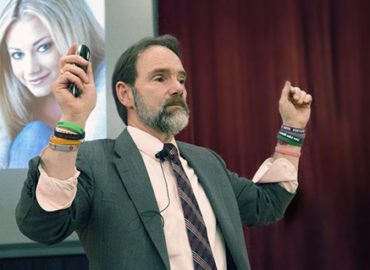
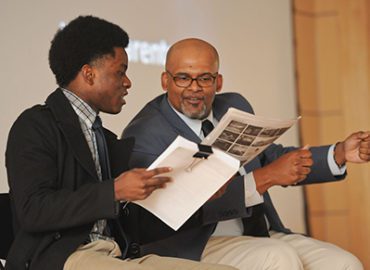
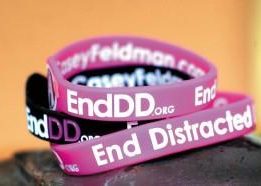

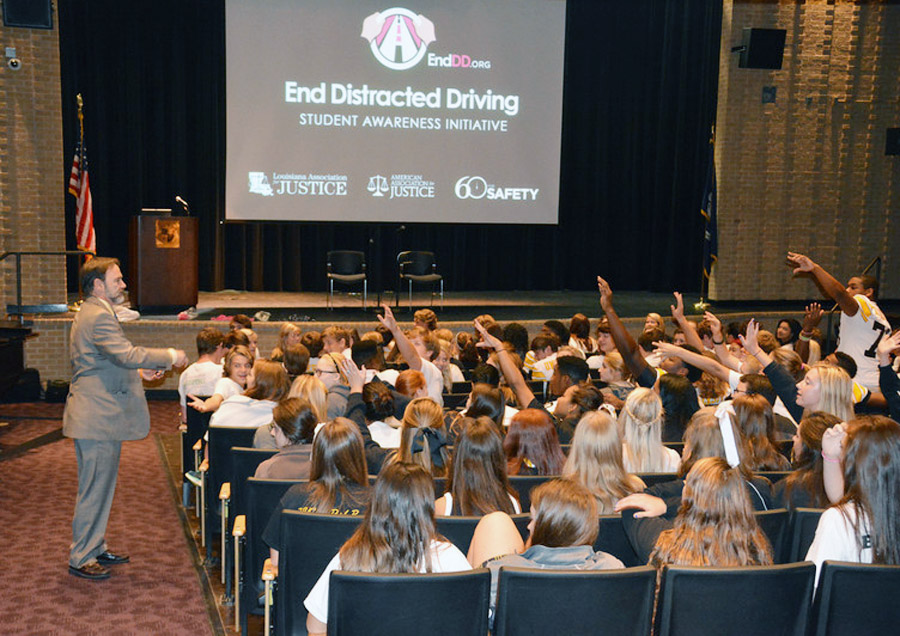
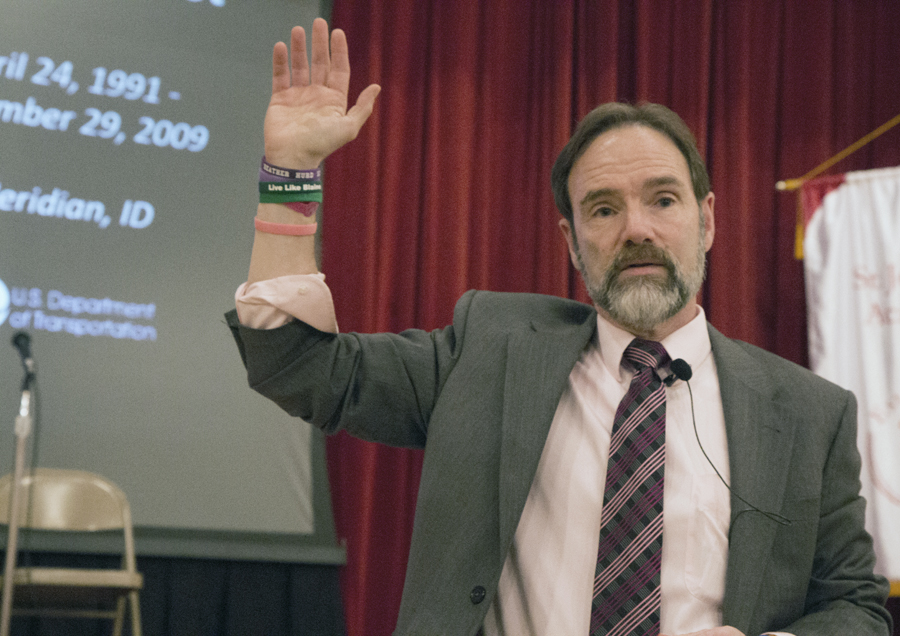



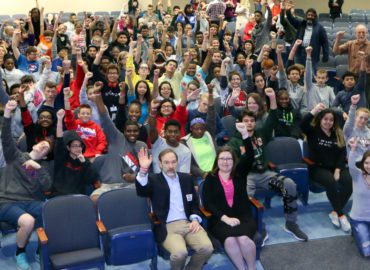
Donate To Help Save Lives
Your contribution to EndDD.org allows us to:
Work with leading experts to develop highly effective presentations
Sponsor contests and campaigns to spread the word and gain momentum
